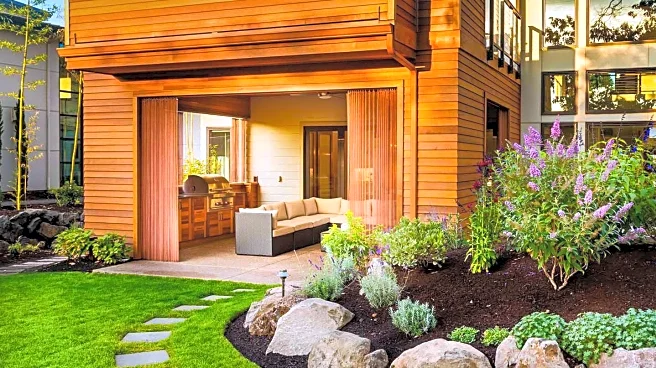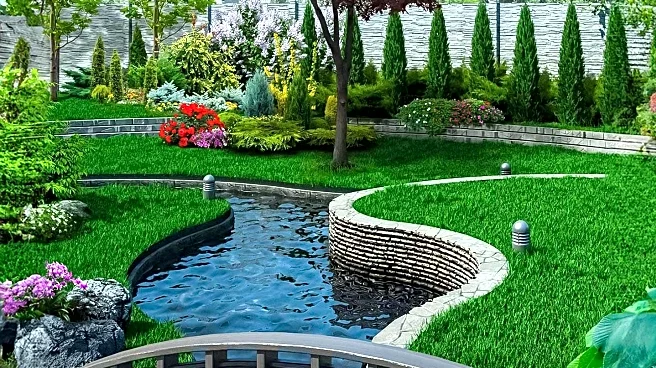What's Happening?
Sara Zewde, a prominent landscape designer, has undertaken a significant project at Dia Beacon, a contemporary art museum in upstate New York. The museum, housed in a former Nabisco box-printing factory, has been surrounded by an unimpressive lawn stained by industrial residue since its conversion in 2003. Zewde's approach to the landscape redesign is unique, focusing on integrating the area's varied history with an eclectic mix of plants such as juniper, banana plant, and chicory. Her design philosophy emphasizes human-centric spaces, aiming to create a garden that serves as a gift to the neighborhood. The project reflects Zewde's broader vision of landscape architecture as a tool for community engagement and historical reflection.
Why It's Important?
The transformation of Dia Beacon's grounds by Sara Zewde is significant for several reasons. It highlights the role of landscape architecture in enhancing cultural institutions and their surrounding communities. By focusing on human-centric design, Zewde's work promotes inclusivity and accessibility, potentially increasing visitor engagement and community interaction with the museum. Additionally, the project underscores the importance of preserving historical landscapes while adapting them to contemporary needs. This approach can serve as a model for other cultural institutions seeking to balance historical preservation with modern functionality.
What's Next?
The redesigned landscape at Dia Beacon is set to open this fall, offering visitors a new experience that blends art, history, and nature. As the project progresses, it may inspire similar initiatives at other cultural sites, encouraging a broader adoption of human-centric and historically informed landscape design. The success of Zewde's work could lead to increased recognition of the importance of landscape architecture in cultural and community development.
Beyond the Headlines
Sara Zewde's work at Dia Beacon also raises important questions about the role of landscape architecture in addressing environmental challenges. By incorporating diverse plant species and focusing on sustainable design, the project contributes to ecological resilience and biodiversity. This approach aligns with broader trends in landscape architecture that prioritize environmental sustainability and climate adaptation.












